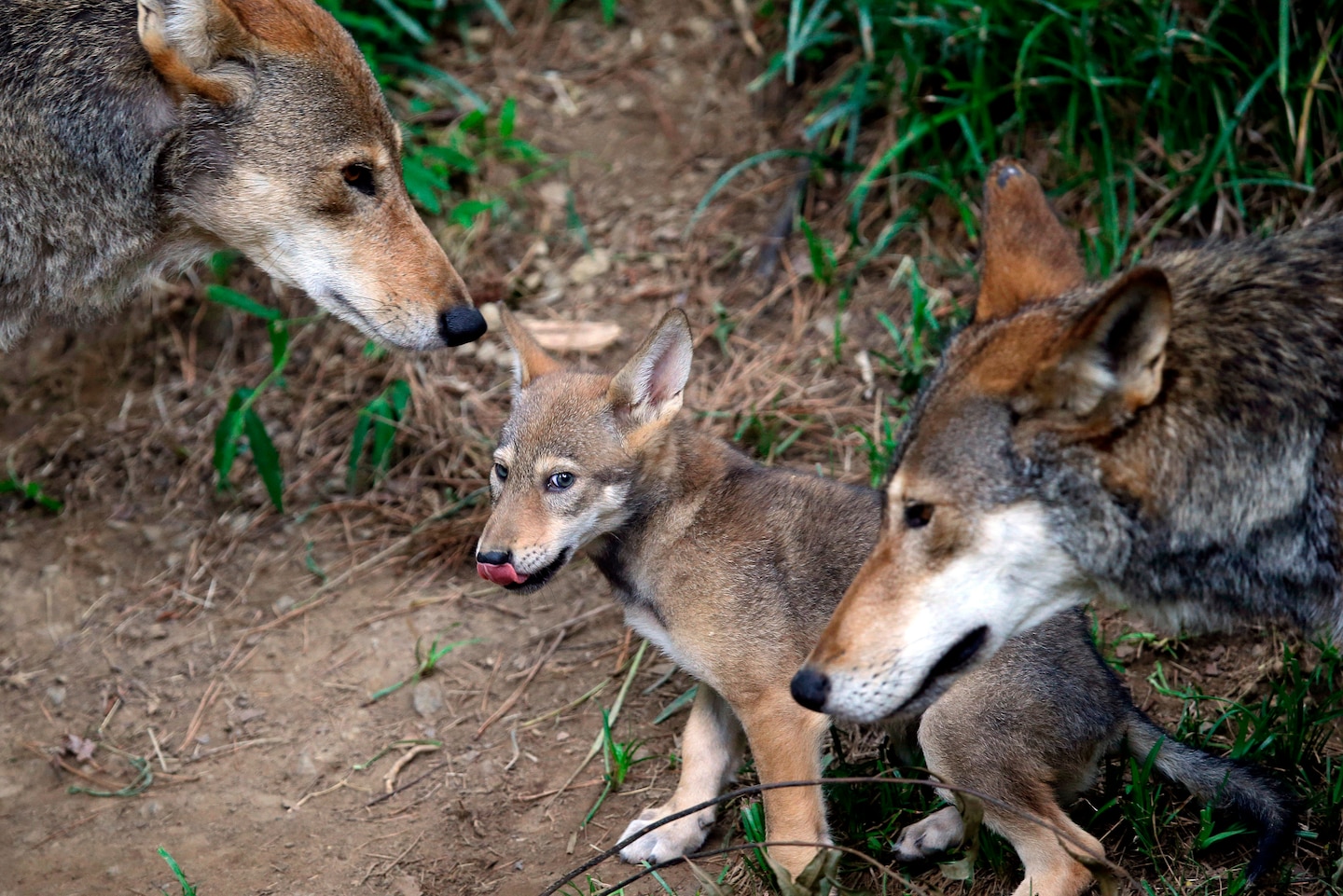Red Wolves name for Washington could help save the species, scientist says

“It would mean a lot of the country would suddenly hear something about the story of this animal, and that’s what the red wolf needs,” Sutherland said in a phone interview. “You’ve got this incredibly dire conservation going on right now, and people don’t even know about it. I think it would bring recognition to the red wolf.”
If you hadn’t heard of the red wolf before it emerged as a potential replacement name for Washington’s NFL team, or perhaps wondered whether it was even a real animal, you’re not alone. There are a lot of people who wish it weren’t.
At the behest of state officials and landowners who opposed the U.S. Fish and Wildlife Service’s red wolf reintroduction program in eastern North Carolina, Congress commissioned a nearly $400,000 study in 2018 to determine whether red wolves were a distinct species or a genetic hybrid of the coyote, a plentiful member of the canine family not eligible for federal protection under the Endangered Species Act. The evidence of the study by the National Academies of Sciences, Engineering and Medicine, released in April 2019, supported the classification of the contemporary red wolf as a distinct species, tracing the animal back to ancestors that lived more than 10,000 years ago.
Red wolves were once found from Texas to Florida, throughout the southeast and up to New York, so it’s likely they once roamed the D.C. area. They were wiped out along the Atlantic Coast around 1900 but survived along the Gulf Coast and were designated an endangered species in 1967. In the late 1970s, as the animals increasingly bred with coyotes, Fish and Wildlife officials captured the last remaining purebred red wolves in Texas and Louisiana and placed them in zoos in an attempt to revive the species.
“This is one of the critically endangered mammal species on the entire planet,” said Sutherland, who has been a vocal advocate for red wolf conservation since 2010. “The amazing thing is that a lot of Americans have no idea that this species is even in our backyard.”
In 1987, the Fish and Wildlife Service launched the world’s first effort to restore a native top carnivore back to the wild. The agency released three pairs of adult red wolves in the Alligator River National Wildlife Refuge on eastern North Carolina’s Albemarle Peninsula, located inland from the Outer Banks. The red wolf population in the area peaked at more than 150 in 2006 but has since been in decline. Hunters and the Fish and Wildlife Service’s management of the restoration project are both to blame, Sutherland said. While there are now roughly 240 red wolves in captivity, the Fish and Wildlife Service stopped releasing new wolves into the wild in 2015.
These days, the red wolf population on the Albemarle Peninsula is believed to be about 20. A Flickr account maintained by Wildlands Network features 100,000 publicly accessible photographs of red wolves and other wildlife taken by cameras on the site, including deer, coyotes, quail, raccoons and one of the largest black bear concentrations in the United States.
For the red wolves to stave off extinction in the wild, Sutherland said it’s imperative that the Fish and Wildlife Service resume releasing the wolves from captivity. He also endorses incentive programs that would reward locals for having red wolves on their property. In the meantime, he and his colleagues continue to engage in outreach with hunters and farmers who live near the refuge, reassuring them that the red wolf, which grows to be between 50 and 80 pounds, is “not the European ‘Big Bad Wolf’ that’s inside our heads.”
“The red wolf has not hurt anybody in 30 years down there in North Carolina, which is a pretty remarkable legacy,” Sutherland said. “They’re shy animals; they don’t really like people.”
Red wolves have several characteristics befitting a football team.
“The wolves are efficient top carnivores, and they can run down a deer and kill it,” Sutherland said. “They can take out things like raccoons and possums and beavers. Compared to a coyote, wolves have longer legs, and they’re bigger and more muscular and stronger. Their territories can be about 50 square miles, so they can cover a lot of ground. They’re fast, stealthy, disappear into the forest pretty easily when they want to. Superlative senses. They’re definitely athletic, and they’re beautiful animals. They’re pretty amazing.”
Sutherland acknowledged that Washington adopting the red wolf as its mascot might perpetuate some of the myths and misconceptions about the species that he has worked hard to dispel over the years, with several fan-designed logo and uniform mock-ups for the name featuring slash marks and fangs. Still, he sees a lot more potential good resulting from the red wolf entering the national consciousness.
“One would hope the current Redskins fans would show some love toward the red wolf and doing more to help save the species, because you wouldn’t want your mascot to go extinct in the wild again,” Sutherland said. “I don’t really see any negatives. I think it makes sense to have an animal mascot, and I think having a red wolf would be a great choice.”






